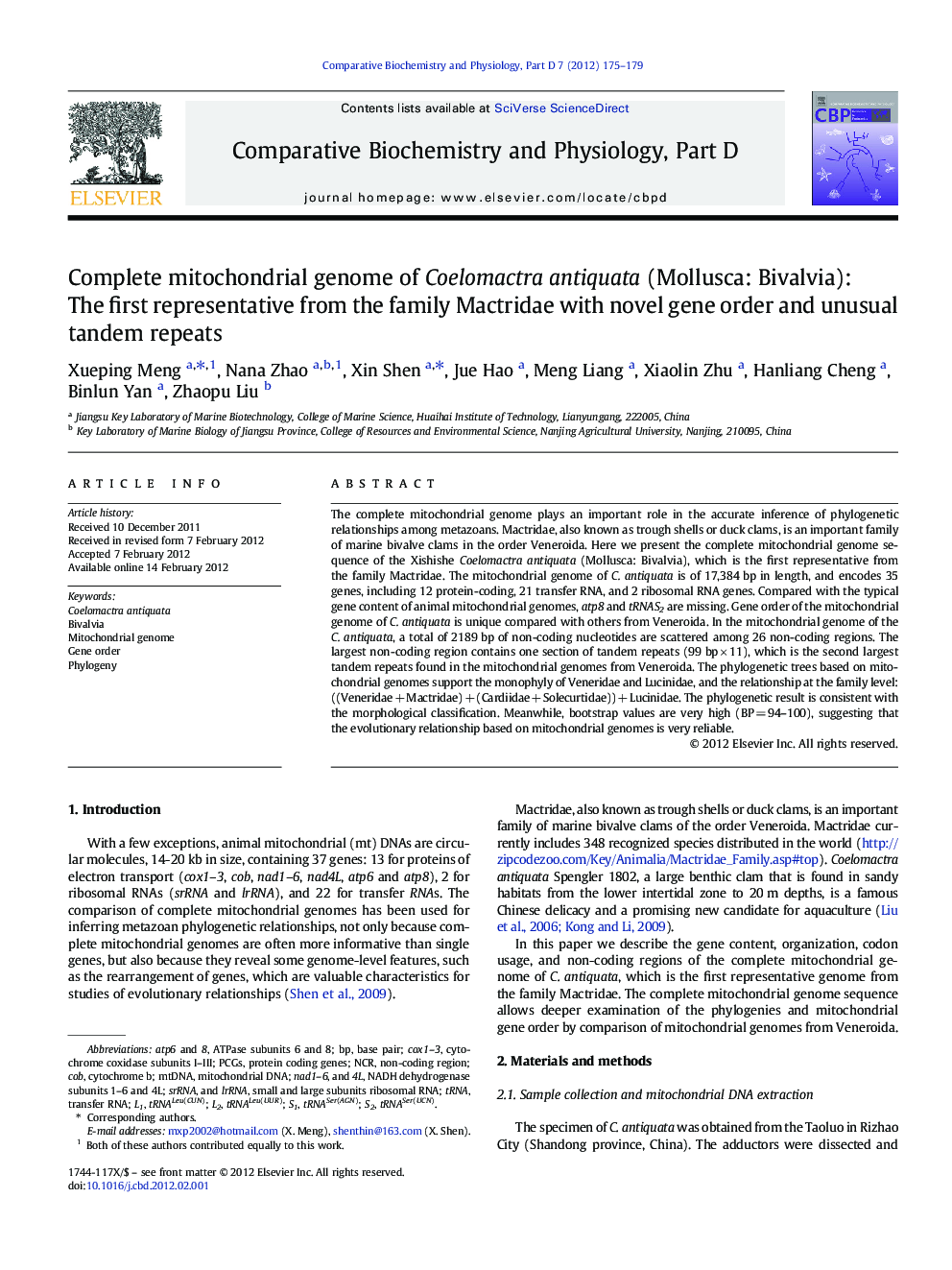| Article ID | Journal | Published Year | Pages | File Type |
|---|---|---|---|---|
| 1978565 | Comparative Biochemistry and Physiology Part D: Genomics and Proteomics | 2012 | 5 Pages |
The complete mitochondrial genome plays an important role in the accurate inference of phylogenetic relationships among metazoans. Mactridae, also known as trough shells or duck clams, is an important family of marine bivalve clams in the order Veneroida. Here we present the complete mitochondrial genome sequence of the Xishishe Coelomactra antiquata (Mollusca: Bivalvia), which is the first representative from the family Mactridae. The mitochondrial genome of C. antiquata is of 17,384 bp in length, and encodes 35 genes, including 12 protein-coding, 21 transfer RNA, and 2 ribosomal RNA genes. Compared with the typical gene content of animal mitochondrial genomes, atp8 and tRNAS2 are missing. Gene order of the mitochondrial genome of C. antiquata is unique compared with others from Veneroida. In the mitochondrial genome of the C. antiquata, a total of 2189 bp of non-coding nucleotides are scattered among 26 non-coding regions. The largest non-coding region contains one section of tandem repeats (99 bp × 11), which is the second largest tandem repeats found in the mitochondrial genomes from Veneroida. The phylogenetic trees based on mitochondrial genomes support the monophyly of Veneridae and Lucinidae, and the relationship at the family level: ((Veneridae + Mactridae) + (Cardiidae + Solecurtidae)) + Lucinidae. The phylogenetic result is consistent with the morphological classification. Meanwhile, bootstrap values are very high (BP = 94–100), suggesting that the evolutionary relationship based on mitochondrial genomes is very reliable.
